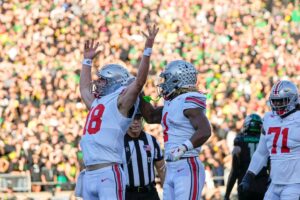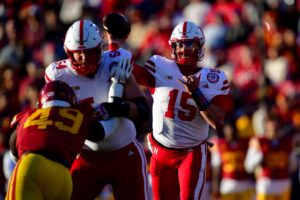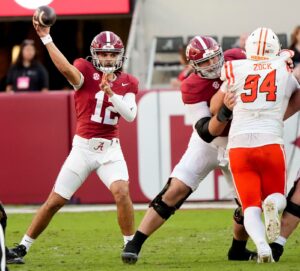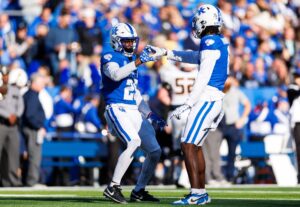NCAA Offers NIL Compensation Guidance
Beginning with our reporting on California’s Fair Pay to Play Act and the NCAA Board of Governor’s announcement that it would begin investigating name, image, and likeness (NIL) compensation of student athletes, we have been covering the possible mechanics and logistics of NIL compensation. Recently, however, the NCAA announced more details about how players could derive NIL compensation, and it takes the least restrictive of the three alternatives we proposed here. Indeed, the NCAA offered NIL compensation guidance simply by taking a hands off approach.
The NCAA reiterated its original position that NIL compensation rules would go into effect in January 2021. The NCAA punted on every other issue imaginable, going so far as to openly invite Congress to draft laws to promote uniformity through federal preemption. Perhaps surprisingly, the NCAA plan expressly allows student-athletes to hire agents for the sole purpose of negotiating NIL contracts, though such agents will face scrutiny and regulation from the NCAA.
The NCAA plan allows student-athletes to use their name, school, and sport in advertising but it prohibits use of school logos, conference insignia, or other college trademarks in branding. Similarly, schools themselves may not pay student athletes. Schools and boosters may not use student-athlete NIL for recruiting purposes either. Finally, all details of every NIL contract must be reported to the NCAA. The NCAA demands that its divisions implement rules to this effect by its self-imposed deadline of January 2021.
The Door Is Wide Open
The NCAA clearly left the door wide open for athletes to capitalize as much or as little as they want. Specific regulations, however, remain unclear. How will the NCAA enforce the limits it does set? Will it be less forgiving of minor violations when schools or boosters break the rules they do set? And are their ways to preserve competitive balance in recruiting, among other things? What might the introduction of powerful agents and the money that comes with them do to the game of college football? And how many players will legitimately benefit with high-dollar contracts early in their careers?
These questions still need answers. That said, it appears the NCAA hopes that Congress will solve these problems. As we prepared to discuss later in our series, if the NCAA, conferences, or schools exercised too much control over the compensation mechanics, Title IX issues would undoubtedly arise. The NCAA has also been afraid to strike fair balances between the needs of its money-makers with the needs of its remaining institutions. This part, then, comes with no surprise.
NCAA Football Gaming Rights
Unfortunately for gaming fans, the guidance offered makes a new series of NCAA Football games unlikely. Why? Well, the student-athlete cannot sell as part of any package the right to use his name or likeness with trademarked insignia of schools, conferences, or the NCAA. Practically speaking, then, EA Sports could presumably pay each player a negotiated sum to use his name and likeness in a video game. But EA Sports could not tied that name and likeness together with school or conference logos.
Theoretically, Congress could step in and address this issue. Congress has certainly offered its heavy hand in less trivial matters. For now, though, hopes an immediate restart of the well-known game series should be tempered.
Teams Hiring Branding Experts
In light of the guidance the NCAA offered on NIL compensation, some schools have already taken the next step. On May 7, WVU announced a partnership between the football program and Jeremy Darlow, a well established athlete brand marketing guru.
I’m very excited about this partnership and service for our student-athletes! #TrustTheClimb https://t.co/eI7jFPBLLc
— Neal Brown (@NealBrown_WVU) May 7, 2020
Partnerships like this should become more common as coaching staffs look to offer advice and guidance to the impressionable athletes under their care. For their part, student athletes should demand the best in this department, for obvious reason. Teams acting now (and there have only been a handful so far) are ahead of the curve. But others will likely catch up quickly as the arms race for athletes eligible for NIL compensation begins.






